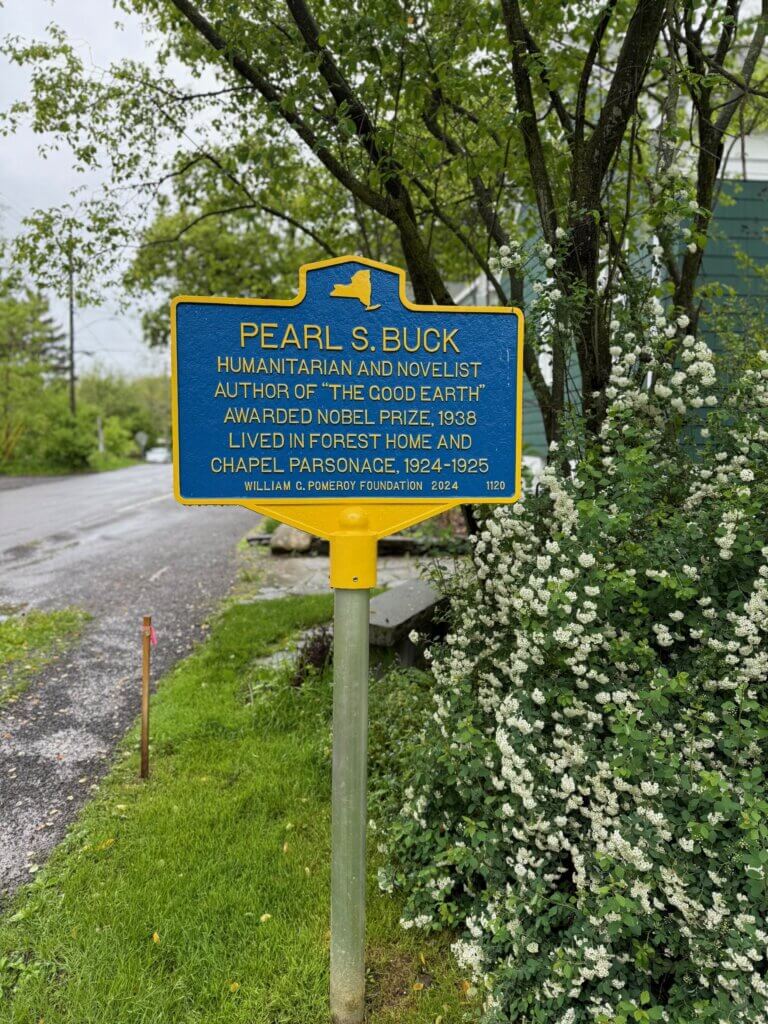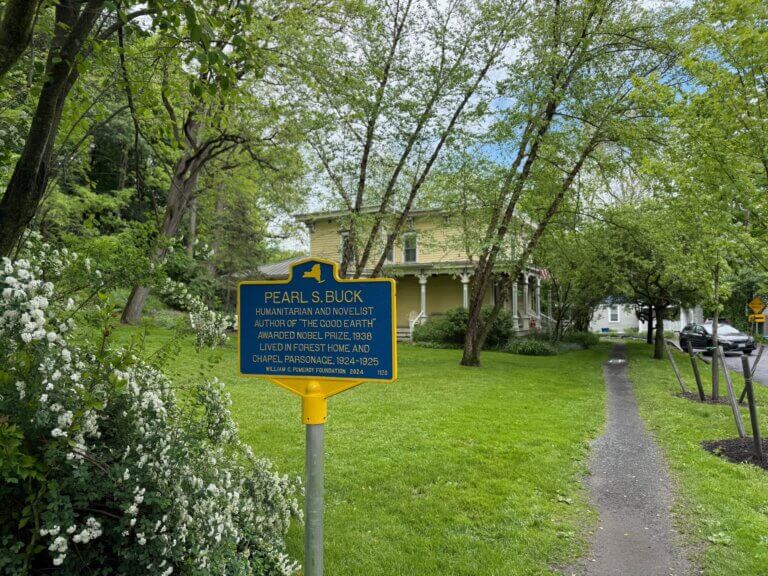PEARL S. BUCK
- Program
- Subject
- Location
- Lat/Long
- Grant Recipient
-
NYS Historic
-
Arts & Culture, People, Site
- 222 Forest Home Dr, Ithaca, NY 14850, USA
- 42.451755, -76.467984
-
Historic Ithaca
PEARL S. BUCK
Inscription
PEARL S. BUCKHUMANITARIAN AND NOVELIST
AUTHOR OF “THE GOOD EARTH”
AWARDED NOBEL PRIZE, 1938
LIVED IN FOREST HOME AND
CHAPEL PARSONAGE, 1924-1925
WILLIAM G. POMEROY FOUNDATION 2024
Pearl S. Buck has secured a spot for herself in the annals of literary history and ranks among the most significant authors of the 20th century. Her book, The Good Earth, was the best-selling novel in 1931 and 1932. It also received the Pulitzer Prize for Fiction in 1932, and it would play a significant role in Buck winning the Nobel Prize for Literature in 1938. While most remembered for The Good Earth, Buck authored several novels, short story collections, articles, biographies, short stories and an autobiography throughout her impressive career.
Buck’s writing has provided a source of inspiration to many aspiring novelists, and, in many ways, offered a bridge of cultural understanding amidst the tense 1930s and subsequent decades. The Good Earth, which was her breakout publication, was inspired by her childhood and early adulthood spent living in China. It told the sweeping story of a peasant family in rural China—the ups, the downs—and did so in a way that chipped away at the widely-held prejudices in America at that time. To note, and evidence of these prejudices: The Good Earth was published nine years before the Chinese Exclusion Act, which was signed into law in 1882 and was the first major law to restrict immigration to the United States, was repealed.
Speaking to the significance of Buck’s work, in an article titled, “Pearl S. Buck, It’s Not You, It’s Me,” written by Jolie Lewis and published in 2017, Lewis writes, “a story about a peasant farming family in rural China, The Good Earth, was unlike anything American readers had encountered before.” Lewis continues, “The Good Earth broadened America’s understanding of what a novel could do, paving the way for readers to be more open to—and eager for—books about other cultures or the intersection of cultures.”
This historical marker, located in Ithaca, New York, sits at a site that comes before her international acclaim. When, from 1924 to 1925, Pearl S. Buck and her husband at the time, agricultural economist John Lossing Buck, lived in Forest Home as they attended graduate school at Cornell University.
Buck’s time in Ithaca is described in an article titled, “The house where Pearl Buck lived is a home,” published in the Ithaca Journal on October 12, 1978:
It was back in the mid-1920s that she and her missionary husband John Lossing Buck were graduate students at Cornell University. To support themselves through their studies, he took on the duties of a part-time pastor at the small community parish. The quaint three-bedroom house at the 222 Forest Home Drive came with the job.
Along with her writing, Buck was a humanitarian who promoted cross-cultural understanding and humanitarian aid through the founding of Pearl S. Buck International along with several other initiatives throughout her life.


